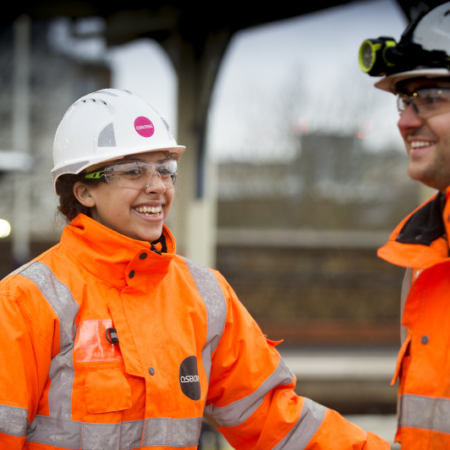Collaborative Approaches Deliver Better Outcomes
Transport infrastructure is all about connecting people and communities and keeping the economy moving. Inevitably, this means that projects to repair, replace or upgrade road and rail assets affect many stakeholders. Delivering the best possible outcomes for everyone demands a collaborative approach.
A recent project to refurbish a bridge deck at Ebbsfleet International Station happened to coincide with the setting up of the new HMRC inland border facility following Brexit. It was also the time when Covid-19 social distancing regulations had been introduced, which was potentially a problem for dog walkers and joggers who were unexpectedly diverted through the main station while the bridge was out of action.
The traffic management plan was continuously updated throughout the project to keep high-volume HGV traffic flowing and the new border facility operating effectively. The Osborne team even provided a stock of face masks for people who hadn’t expected to be going indoors during their morning jog.
Given the potential disruption of future maintenance, Osborne identified and repaired defects to surrounding carriageways within the five-week programme, even though these were not part of the original scheme.
Engaging Stakeholders and De-Risking Projects
Rail infrastructure works, such as replacement underbridges, often have to be completed within short possessions. Stakeholder engagement is an important aspect of de-risking projects.
Replacing the Huntley and Palmer underbridge (so called because it used to form part of a steam rail branch line between the famous biscuit factory and the main rail network in Reading) was a significant undertaking. It had to be accomplished within a tight 55-hour possession.
Replacing the aged structure would allow trains to pass overhead at normal speeds without risks to pedestrians and cyclists passing below. The solution was implemented following close consultation with local residents, council representatives and the Environmental Health Officer.
To minimise disruption and ensure work complied with Section 61 noise restrictions, the new structure was fabricated offsite and comprised eight precast concrete sections and steel walkways. Significant ground protection works were needed to accommodate the ten-axle trailer that shipped the components to the site.
The collaborative approach ensured that the needs of all stakeholders were met and that the project was completed within the possession window.
To learn more about Osborne’s collaborative approach and stakeholder engagement visit our transport infrastructure resource centre or contact Mike Todd ([email protected]).

